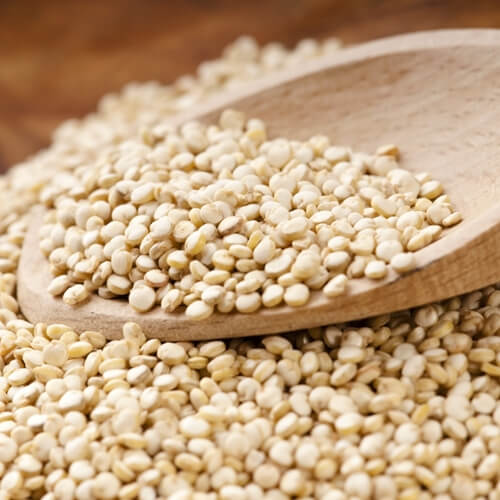Go Gluten Free With Grains
With the growing popularity of gluten-free dining, consumers are moving toward wheat-free alternatives in droves. One of the easiest ways to embrace a gluten-free diet is to start incorporating alternative grains into your cooking. Here are some of the hottest grains on the market, along with some tasty possibilities for adding them to your favorite dishes.
Quinoa
No list of gluten-free “superfoods” would be complete without mentioning the original titleholder: quinoa. This grain, originally cultivated by Incas thousands of years ago, has become the hottest culinary trend in recent years. The grain, which is technically a seed, is loaded with protein, fiber and iron and was originally eaten as a way for natives to increase their stamina.
Teff
Touted by many as the “next quinoa,” teff is an Ethiopian grain that is quickly garnering the attention of nutritionists and chefs alike. Noted for its mild nutty flavor, this tiny grain, in fact the smallest in the world, is valued for its high protein, iron and calcium content. Its flour is traditionally used to make Ethiopian injera bread, but inspired chefs will no doubt find exciting applications for this new “it” grain.
Fonio
Another African grain, this one from West Africa, is a small variety of millet that exhibits a light and fluffy texture not unsimilar to couscous. Not only gluten-free, this grain also sports a low glycemic index, which research shows is a contributing factor to preventing type 2 diabetes as well as coronary heart disease.
Lupin
Lupin, or lupini beans, is a seed grown primarily in Australia, though it is heavily featured in Mediterranean cooking. High in fiber and protein, lupin has proved a popular meat alternative for vegetarians and vegans. Also, lupin’s gluten-free content has made it an increasingly turned-to source of flour for use in gluten-free cooking.
Grain recipes
As gluten-free grains become more and more popular, chefs have begun looking for ways to incorporate them into dishes that are not only healthy, but also delicious. One idea is to add your favorite grains to hearty soups and stews. The earthiness of the grains complements a nice meaty beef stew or hearty bean soup. These grains are also often added to salads with a light vinaigrette. Traditional grain salads such as Mediterranean tabbouleh can be updated and personalized with the addition of different grains and greens. Making a grain salad allows the chef a lot of freedom to create different taste profiles through experimentation.


